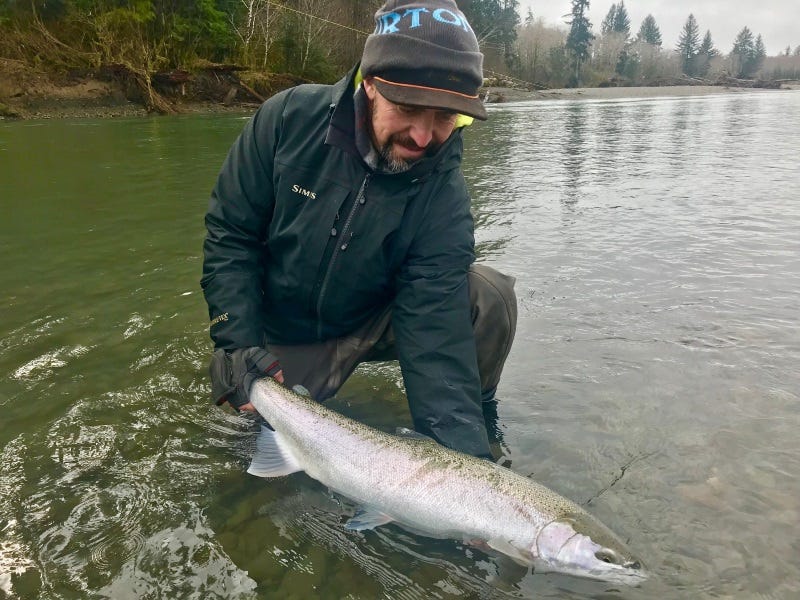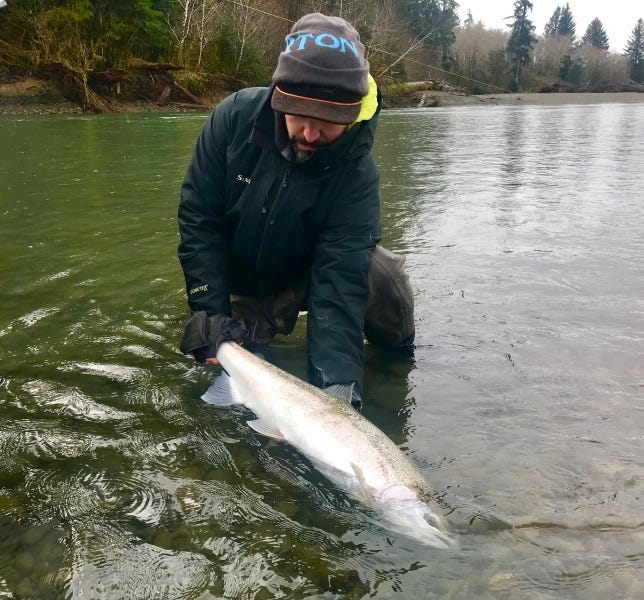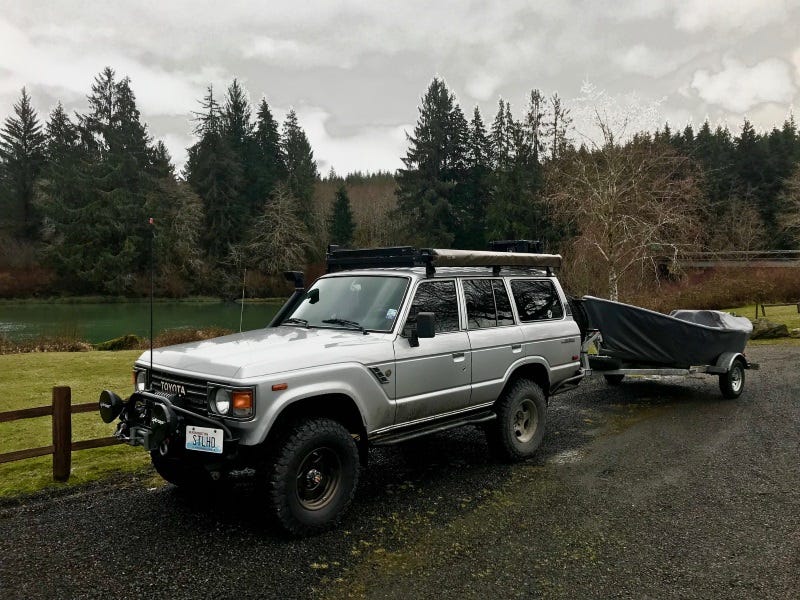Late Season Steelhead on Washington’s Olympic Peninsula


Taking a boat out on the Queets River was like hoisting a rhino up a black-diamond ski run.
We had just finished the lower float through Olympic National Park and were taking out just inside the Quinault Indian Reservation.
After rearranging our trailer for the easiest hoist up the embankment, we gasped as some local old-timers pulled out an aluminum driftboat twice the size of ours in half the time. “Any bug-tugs?” they asked us as they recalled rowing behind us while we swung. “As a matter of fact, we went one for four”, we replied. Of course, we left out the fact that it took us over two and a half days. . . but, that’s steelheading right?
This is primetime for OP winter chrome, which ramps up in mid-January, peaks in March and swings through early April on some streams.
Our favorite fly fishing methods this time of year, include that rare but worthwhile ‘bug-tug’ on swung flies. To have success swinging on these streams, you need to be patient, wait for the river to come into shape, then fish the water that you can actually fish well and enjoy the rain-forest views the rest of the way.
Of course, swinging flies for winter steelhead means sink-tips—you’ll need a selection of these to fit a given situation. Most of the streams are large and require longer, deeper-diving tips, such as those available from RIO and Airflo. We generally loop these onto Skagit FIST or Rage Compact heads (shallow, clear conditions) and toss ‘em with two-handed rods—I like the Echo 3 two-hand lineup and have enjoyed the Echo Glass actions in 7 and 8 weights too. I can’t wait to try the Echo Swing in fall ‘18.

I have found that midday and afternoons seem to be the most productive on the coast. This may be because I’m the most comfortable or the fish are—not sure which. My go-to flies for swinging are anything shrimpy—try out the brighter, hotter colors, meaning red, pink, orange, chartreuse and white, sometimes combined with a speck of black as on the new OPST Ostrich series.
Signature Intruders or tubes, like the Rambulance and the Lady Gaga, are great flies for OP waters. In fact, a good old Popsicle rigged with a set of heavy dumbbell eyes on a size-2 hook has accounted for a number of my OP fish. And don’t forget to try these dead-drifted by changing the angle of your cast; I’ve had a few takes in shallower lies where the fish grabbed the Popsicle almost as soon as it touched down, just as the swing began.
The best conditions during this period of peak fishing are midweek, just after a freshet with falling river levels. You’re better off if you can set out a block of time—a couple weeks perhaps, where you are officially on “Steelie-Watch”, waiting for these conditions. Tell your spouse and your boss (or are they the same?) that you may be leaving anytime during your “watch.” And of course, promise them a few extra favors when you return.

Once you have that window reserved, try out some rainforest chrome. I assure you that other steelheaders from around the nation are doing so. This was evidenced by the trailer plates from California, Oregon, Montana and even Texas (yes, Texas) seen at that same Queets take-out that we used.
To spread the love, be sure to check out the Hoh River, once the best of the bunch, just a few miles north of the Queets, and perhaps still worthy. Also look at the Sol Duc, although the ‘Duc is best fished with a guide the first couple of times due to very technical rowing. Likewise, the Clearwater—smaller, technical and closes later—perhaps best navigated in a raft. In all cases, be ready for rough ramps and soft sandbar driving. Lock in those hubs and bring a tow rope.
Final thought: Please respect the locals, especially guides with clients. How’s the old saying go? “You’ll catch more flies with honey than sh_t.” In recent years, some local guides have begun to view their fishery somewhat acrimoniously. Crowds are on the rise and fish numbers have declined. So, avoid rowing over to “bead” the tailouts of holes being swung. Row on to the next hole and you’ll find that locals are more than happy to share details and advice at the takeout.
For a guided trip on the OP: http://www.tyeecharters.net/olympic-peninsula-steelhead.html; or Trevor Covich at opflyguy@gmail.com
